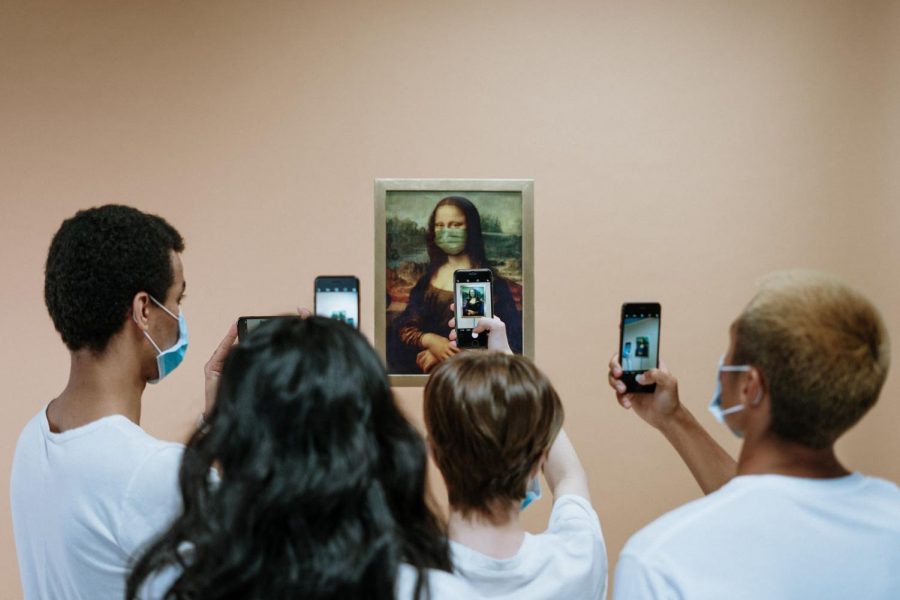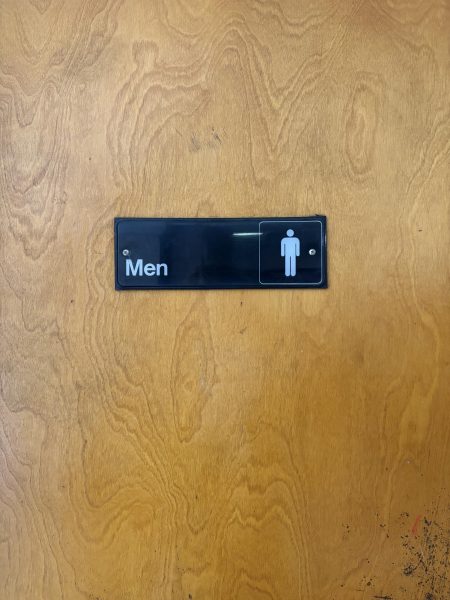Technology In The Age Of The Coronavirus
Students wearing masks photograph a version of The Mona Lisa, who is also wearing a mask.
When we think of being quarantined, we may think of intricate drapings of plastic and chalk-white instruments that filter a room to which we may be shielded from the outside world. But, now, it is reversed: we are being quarantined to shield the outside world from us but without the plastic and costly filtration systems (unless you’re really that worried).
We are living in a much more informal definition of quarantined, but it is scary nonetheless. And while technology may have been the crux of our frustrations with the ways of society before, it is now a go-to for humor, connection, entertainment and escaping the reality of social isolation. From the myriad how-to articles to surviving the crisis (what to cook, what to watch, how to travel, how to maneuver around, how to parent, what to play, how to enjoy yourself, how to stay sane and how to cope with the anxiety) to the videos and audio that bring about calmness and optimism (“Alone Together,” yoga, Peace Corps evacuation, Twitter hashtags and live DJing), technology is entering a pivotal moment.
While it seemed to be an expedient alternative to choose food delivery from Postmats or Doordash before, it now is recommended. According to Business Insider, 15 restaurants and chains have decided to offer free delivery during our self-quarantine. Also, Yelp has implemented a “contact-free” delivery option for small businesses “that will allow [them] to signal through the app that customers can still order food for takeout, deliver or both.” (Yelp has said it will be working with Grubhub.) Postmates, and other feed-delivery services, are beginning “no-contact delivery” And maybe you’ve seen it, but Burger King is now promoting its app on TV, solemnly advising customers to use it to eschew the spread of COVID-19.
However, technology may not be the panacea we wish it to be. Many are taking to social media to spread false and demeaning remarks in reference to citizens of China, expatriates of the country or people of Chinese descent (many have taken to Twitter to catalog the attacks with #coronaracism). The New York Times reported that “nearly two dozen Asian-Americans across the country said they were afraid — to go grocery shopping, to travel alone on subways or buses, to let their children go outside.” The remarks come as the virus, COVID-19, has been deemed the “Chinese virus,” spoken by the President himself—against the recommendation of the World Health Organization. (President Trump has defended himself by saying it is merely to distinguish the counter-narrative of Beijing officials that the virus was the job of the American military.) Still, xenophobic remarks are not solely occurring in the United States: Asian students pelted with eggs and many more instances.
Additionally, little is known about the results of this extra time on devices and the internet. Anecdotal testimonies have noticed a rise in their Screen Time. Nicole Beurkens, a clinical psychologist in Michigan, noted that many adults, who are working from home now, and students, who are using online platforms to learn, require more time on digital devices. This can lead to “a number of maladies ranging from physical . . . to mental.” It is recommended to take breaks and be aware of the time spent and actions done on devices and social media.
Image courtesy of cottonbro, from Pexels.






